Teaching styles are instrumental in helping students reach their educational goals. With a breadth of teaching strategies available, it can be difficult to determine which approach is best-suited for different age groups, curricular objectives and lesson plans.
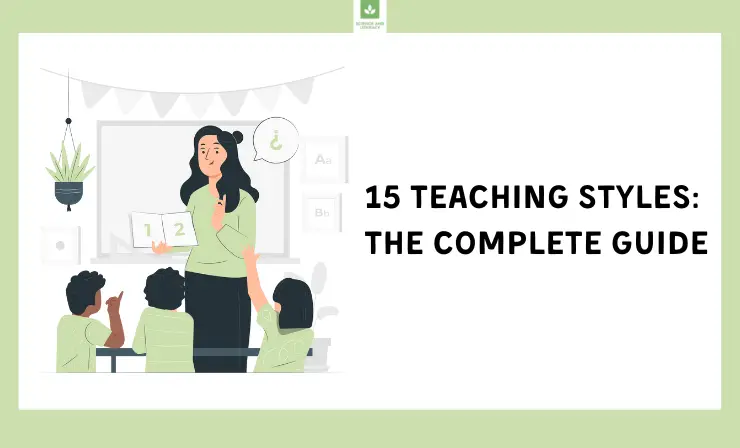
Teachers can foster a more engaging classroom by tapping into the power of multiple teaching styles. Incorporating alternative approaches to instruction helps capture student interest and provides additional reinforcement that facilitates long-term knowledge retention – creating an unbeatable learning atmosphere!
Education is the cornerstone of progress, and teachers are a driving force behind its success. By understanding different teaching styles they can employ in their classrooms, educators gain an invaluable tool to shape future generations – equipping them with knowledge that will be passed down for years to come. It’s essential for instructors everywhere to understand the advantages and disadvantages of various instructional techniques so they may select the best approach possible when guiding students towards enlightenment
To provide clarity on the matter, this article presents an overview of 15 top teaching styles complete with recommended ages for each style’s implementation as well as benefits and drawbacks associated with its use. Additionally included are teaching styles examples illustrating how these types of teaching styles may look within the classroom setting along with guidance on incorporating multiple approaches into one session or determining what works most effectively for today’s learners overall:
| Strategy | Their advantages and disadvantages |
|---|---|
| 1. Lecture-based teaching style → |
|
| 2. Inquiry-based teaching style → |
|
| 3. Collaborative teaching style → |
|
| 4. Flipped classroom teaching style → |
|
| 5. Problem-based teaching style → |
|
| 6. Demonstration teaching style → |
|
| 7. Hands-on teaching style → |
|
| 8. Visual teaching style → |
|
| 9. Kinesthetic teaching style → |
|
| 10. Game-based teaching style → |
|
| 11. Project-based teaching style → |
|
| 12. Direct instruction teaching style → |
|
| 13. Socratic teaching style → |
|
| 14. Experimental teaching style → |
|
| 15. Self-directed learning teaching style → |
|
What are we waiting for? Let’s begin!
1. Lecture-based teaching style
Lecture-style teaching is one of the oldest types of teaching styles in existence. It enables teachers to share their knowledge and wisdom with students; while giving learners an opportunity to take notes, absorb information, then apply it through exercises or tests.

Distinctive features:
- Emphasis on teacher-centered learning;
- Focus on delivering information through lectures;
- Limited interaction between students and teachers.
Pros:
- Efficient way to deliver large amounts of information;
- Suitable for large groups of students;
- Can be used to introduce complex or abstract concepts.
Cons:
- May lead to passive learning and lack of engagement;
- Limited interaction and feedback from students;
- Can be monotonous and may not cater to different learning styles.
Student ages it works best for:
Lecture-based teaching style is a versatile learning tool, helping students of any age gain knowledge and understanding. From elementary school to college and beyond, this style of instruction encourages critical thinking by engaging learners in an immersive educational experience.
Usage examples:
- A college professor delivering a lecture on the history of philosophy;
- A high school teacher providing a lecture on the principles of chemistry.
Check out how a professor from the Kansas State University developed and introduced Lecture-based styles of teaching for his students.
2. Inquiry-based teaching style
Inquiry-based teaching is a student-focused method that encourages active learning and creative thought. With this style, students explore the world around them by questioning, analyzing challenges, and developing their own understanding of topics.
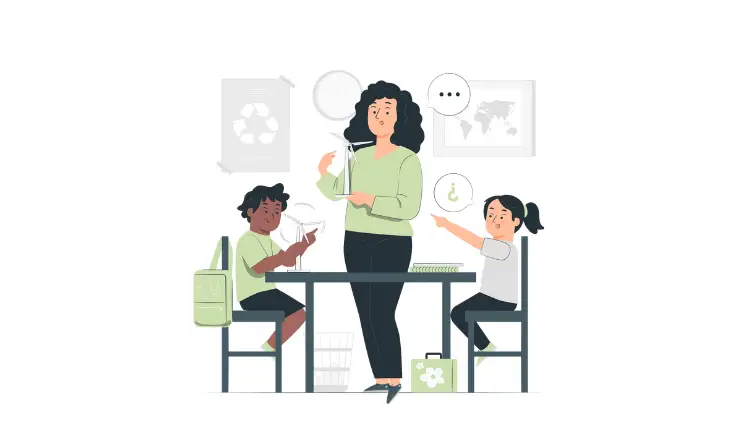
Distinctive features:
- Emphasis on student-centered learning;
- Focus on inquiry and investigation;
- Encourages critical thinking and problem-solving.
Pros:
- Promotes active learning and engagement;
- Encourages students to think independently and critically;
- Provides opportunities for collaboration and peer learning.
Cons:
- May require more planning and preparation from teachers;
- Can be challenging to assess student learning and progress;
- May be less suitable for students who prefer more structure and guidance.
Student ages it works best for:
Inquiry-based teaching can be an effective strategy for engaging students of all ages, but may require a tailored approach when it comes to younger learners.
Usage examples:
- A middle school teacher designing a lesson where students investigate the impact of pollution on local waterways;
- A high school science teacher leading a class on the scientific method, where students design and conduct their own experiments.
See how the 4th grade teacher from Wildwood IB World Magnet School uses the inquiry-based model to put students in charge of their learning, with lessons that stem from student questions and harness the power of curiosity.
3. Collaborative teaching style
By utilizing collaborative teaching, students reap the benefits of cooperation and team-work – working together to pool ideas and resources with their peers in order to solve problems, complete projects or reach shared goals.

Distinctive features:
- Emphasis on student-centered learning;
- Focus on collaboration and teamwork;
- Encourages communication and social skills.
Pros:
- Promotes teamwork and communication skills;
- Provides opportunities for peer learning and support;
- Encourages creativity and innovation.
Cons:
- May require more planning and coordination among teachers;
- Can be challenging to assess individual student learning and contribution;
- May be less suitable for students who prefer to work independently.
Student ages it works best for:
Collaborative style of teaching brings amazing results for student learning at all ages, and with some patience and tweaking, can be a powerful tool when educating younger students.
Usage examples:
- A high school English teacher organizing a group project where students create a podcast series on a literary theme;
- A middle school math teacher designing a lesson where students work in pairs to solve complex problems.
Learn how the students at The College Preparatory School are making collaboration the driving force in their learning.
4. Flipped classroom teaching style
The flipped classroom is a revolutionary pedagogical approach that shakes up traditional learning models. Students can access lecture materials online, allowing them to tailor their study habits outside of the classroom setting. While in-class activities focus on active engagement such as discussions and group work for deeper understanding of content material.

Distinctive features:
- Lecture materials are delivered outside the classroom, allowing for more active learning inside the classroom;
- Emphasizes the role of the teacher as a facilitator and guide rather than a lecturer;
- Encourages collaborative learning and peer-to-peer teaching.
Pros:
- Provides more opportunities for active learning and student engagement;
- Allows students to learn at their own pace and review lecture materials as needed;
- Facilitates deeper learning and understanding through collaborative and peer-to-peer teaching.
Cons:
- Requires students to have access to technology outside the classroom;
- May be challenging for students who prefer a more structured and teacher-led learning environment;
- Can be time-consuming for teachers to create and manage the online lecture materials.
Student ages it works best for:
By utilizing the flipped classroom style of teaching, educators have an effective way to reach students from middle school up through college. This approach enables teachers to increase engagement and maximize learning potential no matter their age group.
Usage examples:
- High school math students are given the unique opportunity to explore their understanding of algebraic equations by viewing engaging lectures and collaboratively problem-solving with classmates. This stimulates a deeper appreciation for mathematics that extends beyond lecture hall walls;
- College history students come to class eager and prepared, having read primary source documents and watched videos on a particular time period. In this environment of inquisitive minds, they discuss the historical events in order to gain deeper understanding of our past.
Watch how Jon Bergmann, founder of of FlippedClass.com, explains what a flipped classroom is and how to get started.
5. Problem-based teaching style
Problem-based teaching invites students to take the helm in their learning journey, utilizing real-world problems as a motivation for critical thinking and problem solving. Working collaboratively with peers, they can foster creative solutions while developing invaluable skills that are transferable across multiple contexts.

Distinctive features:
- Emphasizes the use of real-world problems as a means of learning;
- Encourages student collaboration and peer-to-peer teaching;
- Emphasizes the role of the teacher as a facilitator and guide rather than a lecturer.
Pros:
- Provides opportunities for deeper learning and understanding through problem-solving and critical thinking;
- Encourages collaboration and peer-to-peer teaching, promoting social and emotional learning;
- Prepares students for real-world problem-solving and decision-making in their future careers.
Cons:
- May be challenging for students who prefer a more structured and teacher-led learning environment;
- Requires teachers to have a deep understanding of the subject matter and the ability to facilitate student learning effectively;
- Can be time-consuming to design and implement effective problem-based learning activities.
Student ages it works best for:
Problem-based teaching is an incredibly effective way of engaging students, especially in middle school, high school and college.
Usage examples:
- In a middle school science class, students work together to design and build a device that can purify contaminated water;
- In a college business class, students are given a real-world case study of a company facing financial challenges and must work together to develop a business plan to help the company succeed.
See how teachers and students from four South Australian primary schools stepped right out of their comfort zones, to participate in this semester-long problem-based learning program.
6. Demonstration teaching style
Demonstration teaching is a powerful method for bringing concepts to life in the classroom. By showing students how problems can be solved and tasks completed, rather than simply explaining it to them, teachers create an engaging learning experience that allows their pupils to more easily retain complex ideas from Science or Maths classes.

Distinctive features:
- The teacher demonstrates the task or problem-solving process;
- Students observe and take notes;
- Students are then asked to perform the task on their own.
Pros:
- Provides clear examples and explanations of complex concepts;
- Encourages active listening and note-taking skills;
- Allows students to see how concepts are applied in real-world situations.
Cons:
- May not be suitable for all learning styles;
- Can be time-consuming, especially if there are many students in the classroom;
- Does not provide individualized attention to each student.
Student ages it works best for:
With its effectiveness proven across different educational settings, demonstration teaching is an invaluable resource for boosting student success at all levels. From elementary students to college undergraduates, this engaging style of instruction offers a unique opportunity for learners to absorb practical knowledge and gain important skills.
Usage examples:
- A science teacher demonstrating the process of photosynthesis to their students;
- A mathematics teacher demonstrating how to solve a complex equation to their class.
Learn more about the demonstration teaching style from Dr. Peter Kibet Koech from Machakos University
7. Hands-on teaching style
This strategy ensures that each student is placed in the most beneficial learning environment, with groups continually adjusting to reflect their evolving needs and interests.
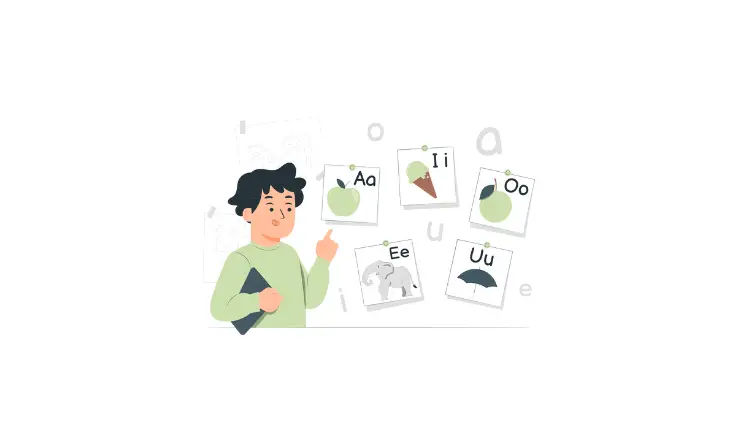
Distinctive features:
- Students actively participate in the learning process;
- The teacher provides materials and instructions for a task;
- Students learn by trial and error.
Pros:
- Encourages active participation and engagement in the learning process;
- Provides opportunities for hands-on experimentation and exploration;
- Helps students develop problem-solving and critical thinking skills.
Cons:
- May not be suitable for all learning styles;
- Requires significant preparation and planning on the part of the teacher;
- May require additional resources or materials.
Student ages it works best for:
Instructing through hands-on activities proves to be effective across all educational levels, from elementary schoolers mastering the basics of arithmetic to university students developing critical thinking skills.
Usage examples:
- A science teacher providing materials for students to conduct an experiment and observe the results;
- An art teacher providing materials for students to create a sculpture or painting.
Here is an example of how you can yse flexible groupping in your classroom.
8. Visual teaching style
Visual teaching techniques have become a popular approach to education, utilizing visual aids such as videos, images, charts and more. This helps students further engage in the educational process by enabling them to learn concepts quickly through visuals that are easier for their minds to digest than pure texts alone.

Distinctive features:
- Uses visual aids to enhance learning;
- Emphasizes the importance of images, diagrams, and other visual materials;
- Encourages students to create their own visual aids to reinforce learning.
Pros:
- Enhances learning by making information more engaging and easier to remember;
- Helps students who are visual learners understand concepts more easily;
- Can be especially helpful for teaching complex or abstract concepts.
Cons:
- May not be as effective for students who learn best through other modalities, such as auditory or kinesthetic learning;
- Can be time-consuming to create high-quality visual aids;
- Some students may find the use of visual aids distracting or overwhelming.
Student ages it works best for:
Visual teaching can be an invaluable tool when it comes to helping young minds grow – aiding students in their educational journey by providing them with a memorable and engaging way of learning.
Usage examples:
- Using diagrams and flowcharts to explain scientific processes in a biology class;
- Creating visual timelines to help students understand historical events in a social studies class.
Learn more about the visual teaching style from Matthew Peterson’s TEDxOrangeCoast speech.
9. Kinesthetic teaching style
Experiential learning through kinesthetic teaching style is a great way to help students retain information. Through physical activities like games, simulations and role-playing, teachers have the potential to open up exciting new possibilities for their students’ educational journey.

Distinctive features:
- Emphasizes hands-on, experiential learning;
- Encourages students to actively engage with the material;
- Uses physical activities and games to reinforce learning.
Pros:
- Helps students learn by engaging multiple senses and making learning more memorable;
- Encourages active participation and engagement with the material;
- Can be especially effective for teaching subjects that involve physical processes, such as science and math.
Cons:
- May be challenging to implement in large classes or with limited resources;
- Can be time-consuming to plan and execute hands-on activities;
- May not be as effective for students who learn best through other modalities, such as visual or auditory learning.
Student ages it works best for:
Kinesthetic teaching is a powerful tool for young minds – allowing students to channel their boundless energy in ways which facilitate learning and engagement. Such an approach enables the utilization of all senses, providing educational experiences that can satisfy even the most dynamic learners.
Usage examples:
- Conducting science experiments to teach about chemical reactions in a chemistry class;
- Using role-playing activities to teach about historical events or social issues in a social studies class.
In this video Janice from Sharp Cookie shares her top 8 study tips to people with kinesthetic intelligence learn more effectively.
10. Game-based teaching style
Game-based teaching is a powerful tool for engaging and motivating learners of all ages. This teaching approach uses game mechanics such as rewards, points, and leaderboards to make learning fun while helping students stay focused on the subject matter.
From math to language arts, social studies or science (and many more!), games can be used effectively to stimulate comprehension in any classroom setting. For instance, in a platform like Smartick, game-based learning is exceptionally well-executed to teach complex math concepts. They provide seamless guidance for finding the least common multiple, turning it into a challenging yet enjoyable task for students.

Distinctive features:
- Game-based teaching is characterized by its focus on engagement and interactivity;
- Games can be used to provide immediate feedback, challenge students at their individual skill levels, and promote a sense of healthy competition among students.
Pros:
- Game-based teaching can be highly motivating for students and can help to build problem-solving and critical thinking skills;
- It can also be an effective way to provide immediate feedback and to personalize learning for individual students.
Cons:
- Some educators may struggle to find appropriate games that align with their curriculum, or may find that certain games are too distracting or difficult for some students;
- Additionally, game-based teaching may not be suitable for all subject areas or learning objectives.
Student ages it works best for:
Game-based learning can provide an exciting, engaging way for students to gain knowledge. From kindergarteners to high schoolers, every age group benefits from tailored games that use fun challenges as a source of education and growth.
Usage examples:
- A teacher might use a game-based approach to teach math concepts by having students play a digital game that requires them to solve math problems in order to progress to the next level;
- A language arts teacher might use a board game to reinforce vocabulary and reading comprehension skills.
In this video, teacher diaries channel shares their top 10 favorite game-based learning apps.
11. Project-based teaching style
Project-based teaching is an effective way to engage students in relevant, meaningful learning experiences. It encourages collaboration among peers and allows learners to explore a topic more deeply while applying their knowledge and skills towards addressing real world challenges – a valuable exercise that develops critical thinking skills!

Distinctive features:
- Project-based teaching is characterized by its emphasis on student-centered, collaborative learning;
- Students typically work in groups to plan and execute projects, which can involve research, problem-solving, and creative thinking.
Pros:
- Project-based teaching can be highly engaging for students, allowing them to explore their interests and develop important skills like communication, teamwork, and problem-solving;
- It can also help to promote deeper learning and understanding of subject matter.
Cons:
- Project-based teaching can be time-consuming and may require a significant investment of resources and planning;
- It can also be challenging for educators to manage and assess student work in a way that is equitable and meaningful.
Student ages it works best for:
Project-based instruction offers an exciting learning opportunity for students of all ages; however, it may be better suited to those with more advanced capabilities in research and teamwork.
Usage examples:
- A science teacher might use a project-based approach to have students investigate a local environmental issue, researching and proposing solutions to address the problem.
- A history teacher might have students work together to create a museum exhibit that explores a particular period or event in history.
Watch Suzie Boss, Education Writer and Project-Based Learning Consultant, introduce what project-based approach and how to get started with it.
12. Direct instruction teaching style
By utilizing a direct instruction teaching style, teachers provide students with an organized and structured environment from which to acquire the foundational knowledge they need for more advanced topics. This teacher-centered approach allows all learners to benefit from clear explanations as well as engaging activities that help reinforce concepts taught during class.

Distinctive features:
- The teacher plays a central role in the learning process;
- The focus is on delivering information through lectures, demonstrations, and explanations;
- Students are expected to listen, take notes, and complete assignments based on the information presented.
Pros:
- Provides clear and structured instruction that can be effective for teaching foundational knowledge and skills;
- Can be helpful for students who prefer a more structured learning environment.
Cons:
- May not be as effective for promoting critical thinking or problem-solving skills;
- Can be less engaging for students who prefer a more interactive or hands-on learning approach.
Student ages it works best for:
Direct instruction is a teaching style well-suited for all ages, but it can be particularly beneficial in early academic settings such as elementary and middle school classrooms.
Usage examples:
- A teacher using direct instruction teaching style to teach math facts, such as addition and subtraction, to a group of second-grade students;
- A teacher using direct instruction teaching style to introduce new vocabulary words to a high school English class.
Learn more on how to motivate the students, activate background knowledge, and explain the new skill through Direct instruction style with TeachLikeThis channel.
13. Socratic teaching style
With the Socratic teaching style, teachers provide an engaging student-centered learning environment where ideas and critical thinking skills can flourish. It emphasizes collaboration among peers to help students come up with their own answers through discussion—an invaluable educational tool for today’s learners!
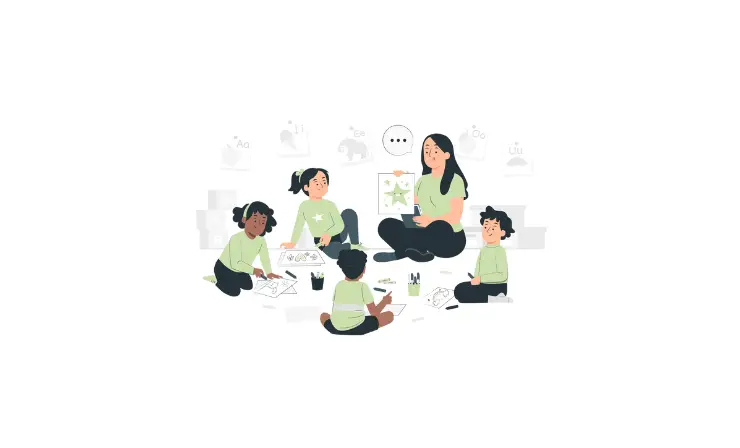
Distinctive features:
- The teacher encourages discussion and questioning among students;
- The focus is on students arriving at their own conclusions through critical thinking and analysis;
- The teacher acts as a facilitator rather than a lecturer.
Pros:
- Encourages critical thinking and promotes student engagement;
- Can help students develop strong problem-solving and analytical skills.
Cons:
- Can be less structured than other teaching styles, which may make it less effective for teaching foundational knowledge and skills;
- Can be challenging for students who are less comfortable with public speaking or expressing their ideas in a group setting.
Student ages it works best for:
Socratic teaching is a versatile and effective method for educating students of all ages, but shines particularly in higher level academic settings.
Usage examples:
- A teacher using Socratic teaching style to lead a discussion about a current event in a high school social studies class.
- A teacher encourages critical thinking and analysis of a literary text in a college English class.
Here’s some more information on the Socratic Method.
14. Experimental teaching style
Experimental teaching provides students an engaging and meaningful learning experience with a hands-on approach. Through experiential exploration, this style of education promotes interaction between the material and student in subjects varying from mathematics to literature.
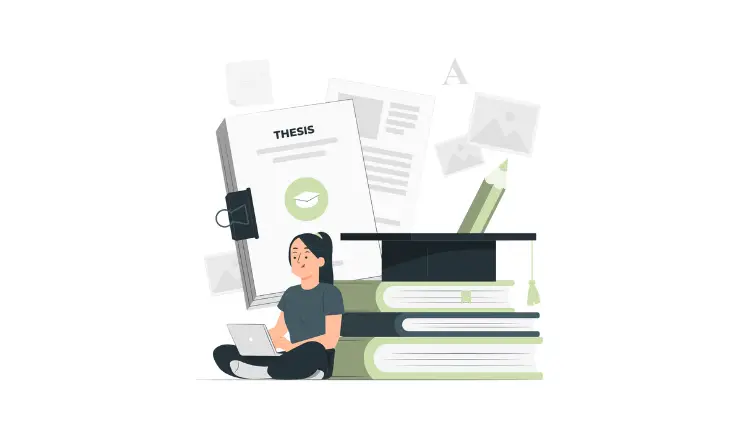
Distinctive features:
- This teaching style is characterized by its focus on hands-on learning and experimentation;
- Students are encouraged to explore and investigate the subject matter through experiments and other activities, rather than simply memorizing information;
- This approach emphasizes critical thinking, problem-solving, and creativity.
Pros:
- Encourages active engagement with the material;
- Develops critical thinking and problem-solving skills;
- Fosters creativity and innovation.
Cons:
- Can be time-consuming and require additional resources;
- May not be suitable for all subjects or learning objectives;
- Requires careful planning and preparation to ensure experiments are safe and effective.
Student ages it works best for:
All students can benefit from experimental teaching, but the style is especially impactful among older learners who have a greater appreciation for science and are ready to tackle more sophisticated experiments.
Usage examples:
- In a biology class, students might design and conduct their own experiments to investigate the effects of different variables on plant growth;
- In a physics class, students might use simulations and hands-on experiments to explore the principles of motion and energy.
15. Self-directed learning teaching style
Self-directed learning is a powerful approach that equips students with the autonomy to drive their own progress. Through this style of teaching, learners are encouraged to cultivate self-motivation and critical thinking while developing independence.

Distinctive features:
- Students take responsibility for their own learning, set their own goals and pace of learning;
- Students choose their own learning materials;
- Students manage their own progress.
Pros:
- Encourages self-motivation and independence;
- Allows students to pursue their own interests and passions;
- Can be more efficient and personalized than traditional teaching methods.
Cons:
- Requires a high level of discipline and time-management skills;
- May not be suitable for all students, particularly those who require more structure and guidance;
- Can be challenging for teachers to implement and assess.
Student ages it works best for:
Self-directed learning offers a unique opportunity for learners of all ages to take their education into their own hands. For those driven by motivation and passionate about knowledge acquisition, it can be an especially powerful tool!
Usage examples:
- A high school student who sets their own goals for an independent research project;
- A college student who creates their own study plan for an online course they are taking.
In this video, teachers at Summit Public Schools explain the role of the teacher in self-directed learning.
What Teaching Style is Best for Today’s Students?
Today’s students have a wide range of needs and educators are responding by exploring new, creative teaching methods. We’ve already dove into 15 proven teaching styles, but which one is most beneficial for today’s learners? By examining current research in education, we will discover which style empowers our future generations to succeed!
Overview of current research and trends in education, and how they relate to teaching styles
Educational researchers are revolutionizing the classroom experience. The latest trends focus on personalization, student-centered interactions and making use of cutting edge technology to create a more interactive learning environment than traditional lecture teaching styles can offer.
Rather than an academic setting dependent on monotonous lectures and memorization of material, the flipped classroom offers a more interactive experience. Here students benefit from pre-recorded materials that prepare them for class discussion where they can collaborate with peers. Project-based learning allows learners to tap into their own creativity by tackling longterm projects covering multiple topics while being given freedom in its execution
Technology has revolutionized the modern classroom, empowering teachers to leverage innovative educational approaches such as game-based learning and advanced online resources. This trend is transforming instruction into an engaging experience that encourages students to acquire knowledge through interactive activities.
Overall major pros and cons of switching different teaching styles
Empowering students and using technology as part of the classroom experience can offer many learning benefits, but teachers must factor in extra preparation time to ensure success. Thoughtful structuring of activities is key for engaging students and creating an effective learning environment.
Technology-based teaching styles and the consequent need for specialized resources can be a costly hurdle. Additionally, student-centered learning requires proper assessment methods with an emphasis on providing formative feedback throughout the course of instruction.
By implementing these teaching styles, teachers can not only ignite student motivation and engagement but also enhance learning outcomes for an all-around enjoyable educational experience.
How to choose the most effective teaching style
Educators seeking the most optimal instruction for a lesson or unit should take into consideration multiple aspects, such as content and aims of learning. Furthermore, it is crucial to factor in students’ specific preferences and capabilities by providing distinct activities that accommodate their individual styles. Making these considerations can help ensure an engaging class environment where all learners feel supported!
Teachers must be resourceful and creative when it comes to instruction, leveraging what is available to them and tailoring their teaching styles accordingly. Adopting an adaptive approach enables educators to assess the effectiveness of strategies in real-time from feedback gathered directly from learners.
In the ever-evolving education system, teachers must factor in many variables when deciding how to teach. According to research findings, student-centric learning involving technology appears as a beneficial and engaging way for students of all abilities to learn successfully – though one should be mindful of any potential drawbacks that may arise from these approaches.
Keep Learning
Teachers looking to elevate their pedagogical acumen can explore a world of teaching styles and techniques by taking advantage of various platforms. With numerous resources available, educators can discover useful advice on best practices that will bring any classroom alive! Some highly recommended options include:
- Edutopia offers an invaluable resource for teachers, providing a wide array of articles and tools to help educators further their students’ knowledge. Its vast library of topics covers everything from instructional techniques and style preferences, to the latest in educational trends – helping ensure that both experienced instructors as well as novices can stay up-to-date on essential teaching strategies.
- TeachThought is the ultimate professional development destination for educators, offering a diverse selection of courses and resources to help teachers upgrade their skills and stay current with best practices. With inspiring articles and podcasts on teaching approaches from industry experts, they’re an invaluable resource in today’s classroom.
- ASCD provides teachers with premier professional development opportunities, such as webinars and conferences tailored to help them enhance their teaching practices. With personalized resources at the forefront of our mission, we hope all educators can unlock the potential within themselves and their students.
With a variety of accessible resources, teachers are empowered to further refine their approach to teaching and create positive learning experiences for students. By capitalizing on the knowledge provided by these cutting-edge strategies, educators can continue developing best practices that lead directly to greater student success.
Conclusion
Educators who recognize the value of flexible lecture styles, and are willing to experiment with various approaches tailored to their students’ unique needs can unlock learning potential in powerful ways. By creating an interactive environment that fosters growth, teachers set up meaningful pathways for academic success – giving each student room to explore what works best when mastering course material!
- Overview of 22 Low-Code Agencies for MVP, Web, or Mobile App Development - October 23, 2024
- Tips to Inspire Your Young Child to Pursue a Career in Nursing - July 24, 2024
- How Parents Can Advocate for Their Children’s Journey into Forensic Nursing - July 24, 2024
